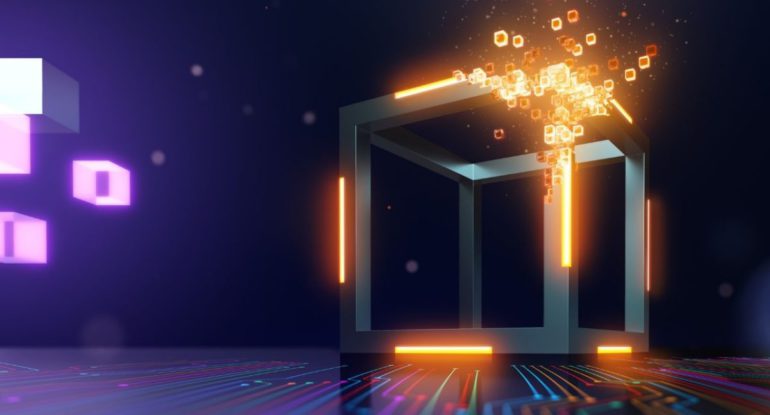DIANA AMBOLIS

Konstantin Vilk is the co-founder and CTO of QuSecure, where he is responsible for advancing quantum resilient cybersecurity innovation. Blockchain is one of the great technological revolutions that has swept the globe and quantum is helping to enhance blockchain security. It is primarily a financial vehicle and enabler of the emerging supply chain, smart contract technologies, record management, and clinical record monitoring. It is regarded as a financial asset with extremely high extrinsic value. Blockchain technology powers cryptocurrencies like bitcoin, allowing users to perform virtual transactions online, actual cash faster, and trade without the need for a traditional bank or credit business.
There is an increasing demand for technologies that can protect data while proving it has not been tampered with. Blockchain is regarded as very safe. Due to its decentralized nature, a consensus system of checks and balances and cryptographic underpinning is used to secure the data. As a result of these factors, it has evolved into its financial asset class for both consumers and substantial institutional investors.
Quantum Computing In Blockchain Security: An Overview
In papers, Quantum computing is frequently mentioned as a threat to blockchain security, saying that it will undermine its records’ cryptographic base, communication protocols, and immutability. Quantum computers are accessible via the cloud and purposefully created by nation-state actors to crack present cryptography. It is just a matter of time before attacks against blockchain and cryptocurrency emerge. A quantum computer is not like the traditional computers we use today. Quantum computers use subatomic processes such as entanglement and superposition to accomplish computations far more potent than our present computers.
Traditional computers employ conventional processors with a 64-bit word length (1+N), but quantum computers use quantum processors with qubits, which expand the word size exponentially (2N). Compared to the linear processes utilized by our present, traditional computers, this is useful for issues with high numbers of variables that must be computed as a huge instruction set.
— IBM News (@IBMNews) March 29, 2022
A successful quantum attack on a blockchain will undermine any consumer trust in the blockchain, resulting in a financial cascade. A successful quantum attack on cryptocurrencies like bitcoin, on the other hand, would have severe consequences for crypto owners, according to a Hudson Institute study. “The entire crypto market capitalization in 2021 also hit a record $3 trillion,” according to The Block Research, “after recrossing $1 trillion in January and $2 trillion in May,” demonstrating the global worth of blockchain technology.
These cascading effects might bring the economy to a halt. It’s critical to safeguard this value by solving the underlying issues with wallet and node connectivity and the basic infrastructure, which includes strengthening the blockchain’s underlying algorithms.
Algorithms of Grover and Shor
Consider Grover and Shor’s two well-known quantum computing algorithms and how they relate to the blockchain. Grover’s approach optimizes search capabilities by utilizing quantum qualities via a quantum computer, allowing users to identify values among billions of unstructured data points all at once. On the other hand, Shor’s approach solves the problem of “finding the prime factors of an integer.”
Grover’s and Shor’s algorithms differ in that Grover’s is more of a threat to cryptographic hashing and stored data, while Shor’s is more of a threat to the communication channel between the wallet and the blockchain nodes. Traditional computers can’t reverse-engineer cryptographic hashing since the processing power is too expensive in terms of time and resources. Performing linear computations on traditional PCs takes too long, even when using GPU farms.
— Logic Geometry, Information (@LGcommaI) June 14, 2021
Quantum computers have now become a scientific reality. Advances in the last two years have shown that quantum computers capable of outperforming traditional computers could be available in a few years. A quantum computer can deduce the cryptographic keys associated with any public wallet address on a blockchain or attack data in transit using Shor’s algorithm. This would threaten blockchain users and destroy trust, as attackers could hack into accounts at scale.
Using a hash collision attack, Grover’s technique can break cryptographic hashing faster than a conventional computer can. When performing a hash collision attack, Grover tries to identify two identical inputs that provide the same hash value. This causes an error and gives people the power to update data protected by identical digital signatures that safeguard the immutable record. As a result, trust in the blockchain erodes as data is manipulated and captured for profit.
Cryptocurrency mining
Mining is a technique for confirming cryptocurrency transactions and demonstrating proof of work. The miners can be reimbursed in cryptocurrency by adding this information to a blockchain block, a mining transaction database. They are leveraging the ability of quantum machines in combination with Grower’s algorithm. Crypto mining is solving complex problems to create individual blocks added to the blockchain. It shifts and disrupts the mining process itself.
What Will Happen Next?
With all of the possibilities that quantum brings to the world, we only have forecasts for both quantum computing and blockchain.
Blockchain developers can focus on developing quantum-resistant ledgers to defend the blockchain from quantum computing attacks in the interim. It will alleviate concerns about this emerging technology while also increasing trust when used with quantum cryptography seeding. Using cryptographic systems to protect against quantum threats is conceivable with communication protocols like QSL (secure quantum layer) and post-quantum cryptography (PQC). PQC techniques, such as those investigated by the National Institute of Standards and Technology (NIST), hide a cryptographic key using sophisticated mathematics such as multi-hundred-dimensional lattice infrastructures. Research shows these algorithms are highly resistant to quantum attacks and may be swiftly deployed across networks and data.
No comments:
Post a Comment